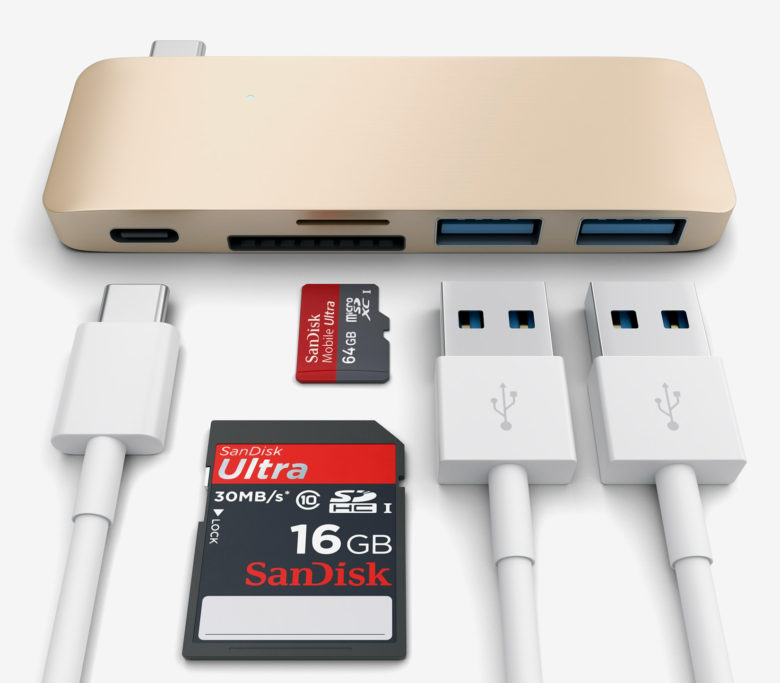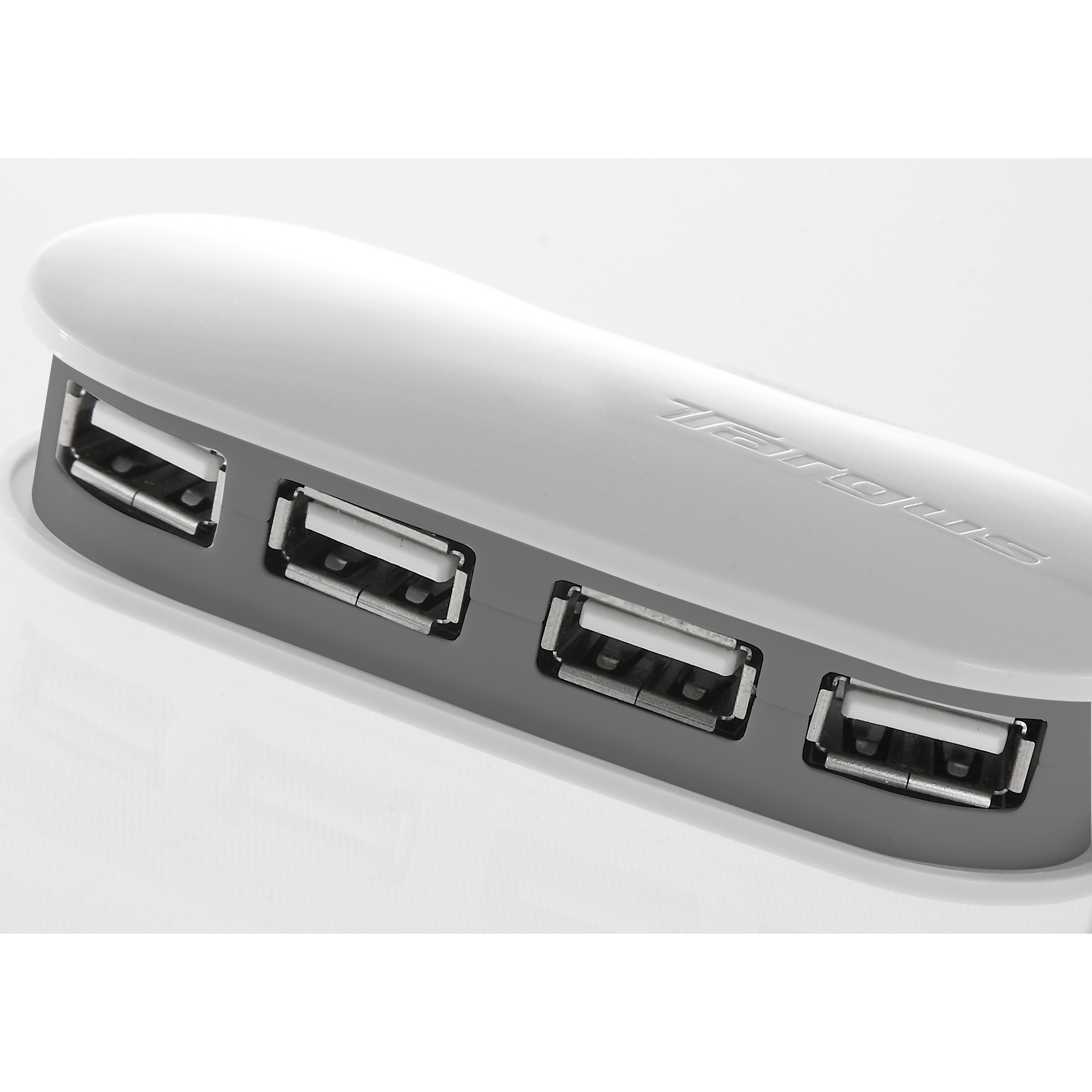If you have the latest MacBook Pro, you may have noticed that you're missing a lot of ports found on legacy laptops and that classic peripherals (even those made by Apple!) can no longer be connected to your Mac. So what's up with these new ports, and how do you use your external displays, work equipment, or even a wired mouse with this MacBook? When you think of USB, you probably picture the flat rectangular piece that takes a few tries to insert the right way but is used for dozens of devices. This is actually technically called USB-Type A and is gradually being replaced by USB-C ports which are much smaller and reversible (so no more struggling to insert it correctly). Thunderbolt 3 is a technology that works through the new USB-C terminals to transfer data 4 times faster than on the latest USB-A and is being utilized in the ports on your new MacBook.
You can learn more about Thunderbolt by watching (YouTube). The only downside to USB-C and Thunderbolt 3 is that many devices have not made the switch to USB-C outputs, which means you still need to connect to ports such as HDMI or SD slots that no longer exist on your Mac. This problem can be solved by purchasing a ton of dongles or just a single dock, which is a device that contains all the legacy ports but connects to your Mac via the USB-C port.
It allows you to use everything you normally would without worrying about the lack of built-in ports on your Mac. Quick Summary A lot goes into picking the right docking station, but a lot of times it comes down to connection type. That's why I will be highlighting these docks by which Mac they were made for. - built for the 15' MacBook Pro from 2012/2013, it's meant for creating your optimal workstation at a single location. for any MacBook using Thunderbolt 2, this dock has you covered with all the basic ports such as Ethernet, HDMI, SD reader, and USB-A 3.0. compatible with any Mac using USB-C tech, this dock is also fairly versatile and includes everything you need to act like your ports never disappeared in the first place. designed specifically for the 2016/2017 MacBooks, this integrates seamlessly and appears to be an extension of your Mac, making it a truly sleek accessory.
Includes the basic HDMI, SD, and USB slots (no ethernet). Who Should Get This? A dock for MacBook Pro is definitely going to be most useful if you're using the latest MacBook Pro and can't do your normal work without the legacy ports. Even if all you need is a USB-A mouse, a dock will be key to running that.
If you're on an older MacBook Pro model, there are docks made for Thunderbolt 2 (has a different port and tech than Thunderbolt 3) but they may be less useful since many of the ports you need will be built in. On the other hand, if you're using specialty ports or simply need more than are built in, a dock is still a great choice. Buying a Dock for MacBook Pro: What to Look For? Connection Type For new MacBook Pros, you need a dock that runs on USB-C Thunderbolt 3 both because of the port type and because of the electronic technology it is using. Older MacBooks must utilize a Thunderbolt 2 dock, which has a specialty port. Purchasing the wrong type dock for your Mac will render it unusable since the two types of ports are not both found and different models of Macs.
Available Ports Docks come with a variety of ports, but there's no point in paying for extra ports you'll never use. For example, if you just need a few classic USBs, you'd be better off with a smaller dock than one that includes a half-dozen video connections for display extension and presenting. Alternatively, if you need a wide variety of ports make sure to look for a dock that has you completely covered so that you don't have to go searching for additional dongles unless absolutely necessary. Size/Type The majority of docks are freestanding and can be placed wherever you like on your desk while you're using your MacBook. For these, make sure to pick something that fits in your current bag if you plan to use it at more than one location (such as home and the office). However, some docks also double as desktop stands which may be more useful if you don't like to have many loose wires or have a limited workspace. These do tend to be less portable though, so it is a compromise.
The Best Dock for MacBook Pro: Our Picks Please note: all the docks/hubs listed below are chosen based on the criteria above, plus our our personal take and preferences. They are by no means intended to rank in this order. Using a MacBook with the older technology? Don't worry, you're not the only one in that boat, and the Elgato dock has you covered. With ethernet, HDMI, and USB-A, its got all the basics to keep you on track.

Pros: Plenty of USB-A 3.0 connections to use with legacy equipment and keeps a sleek design. Includes the most commonly needed types of ports without adding too many unnecessary features. Supports 4k resolution. Cons: Dual displays are only supported when using a Thunderbolt display and HDMI connector. If you were looking for a powerhouse, you've found it. This hub from Tikko includes extra ports for anything you could ever be worried would disappear, even an extra audio jack that can be used for recording equipment.
Creative professionals will also appreciate the revival of the SD card slot. Pros: Covers all the bases in regards to port variety while also allowing you to charge your MacBook through the hub while it is in use. The metallic design will match your laptop and blend in with the desk. Cons: Short connecting wire forces you to keep things close to home, which may be undesirable for some users.
Laying flush with the edge of your MacBook so that it almost appears to have been built in, this dock offers you a little bit of everything. You'll regain the Thunderbolt 3 and USB-C ports it plugs into since these are also built into the dock, as well as gather an HDMI and SD slot in addition to the classic USB.
Usb Hub For Macbook Pro
Pros: Integrates seamlessly with your MacBook for a sleek design that's sure to catch eyes. Contains standard ports one would hope to recover such as HDMI and SD Card Reader. Designed specifically for the 2016/17 MacBook Pro, with or without touch bar. Cons: Doesn't work with hard drives larger than 2TB.

Planning to keep your dock mainly in one location? This nifty option doubles a stand and lets you keep all your cords plugged into one place rather than having to unplug all each time you move your laptop elsewhere. Now, it's just pick up and go. Designed for 2012 and 213 MacBook Pro. Pros: Keeps your cords in place and your laptop portable, and even offers a comfortable incline for you to work on. With plenty of USB-A ports, Ethernet, HDMI, and additional Thunderbolt ports, you're set to make your workstation work for you.
Usb Hubs For Mac
Cons: Designed to be stationary, so don't expect this one to come easily with you on excursions. Additional Tips & Resources So, what if you already have a Thunderbolt 2 dock but just purchased a new MacBook?
Luckily, you don't need to buy a whole new dock. Apple sells a bi-directional Thunderbolt 2 to Thunderbolt 3 dongle, which means all your Thunderbolt 2 gear can be used with your new Mac. Can't find a dock with the right mix of ports to serve your needs?
From MacWorld tells you exactly which dongles to purchase for which devices and needed ports, which can then be plugged into your computer and skip the dock altogether if needed. Conclusion While it's annoying to wait for the rest of the tech industry to catch up with the technology Apple has implemented, there are still plenty of ways to use your accessories with the modern MacBook. Do you already have a favorite dock or Thunderbolt peripheral? Tell us about it by visiting the Contact page.
Published Mar 4, 2018.